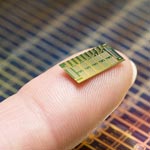
Google has embarked on what may be its most ambitious and difficult science project ever: a quest inside the human body. Called Baseline Study, the project will collect anonymous genetic and molecular information from 175 people—and later thousands more—to create what the company hopes will be the fullest picture of what a healthy human being Continue Reading →







